Petroglyph Canyon
Petroglyph Canyon, accessed by the Mouse’s Tank Trail in Valley of Fire State Park, Nevada, contains one of the richest collections of ancient rock carvings in the Mojave Desert. The canyon lies about 50 miles northeast of Las Vegas and extends through narrow, red sandstone walls etched with hundreds of petroglyphs dating back two to three thousand years. -
- 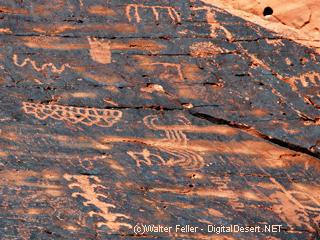
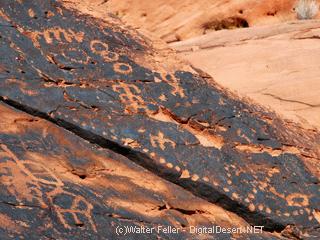 -
- 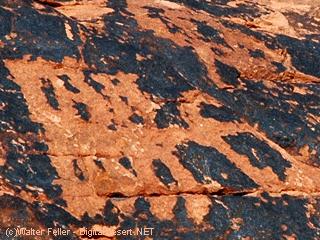
 -
- 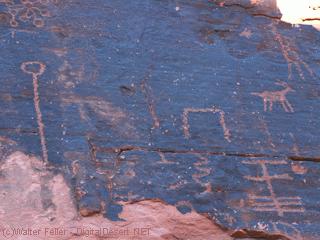
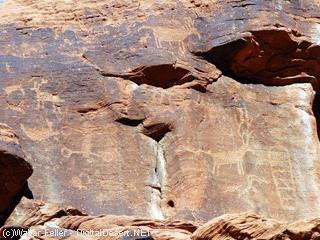 -
- 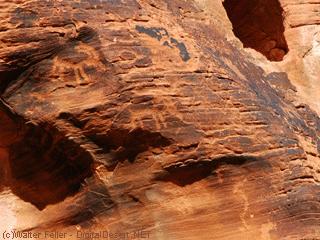
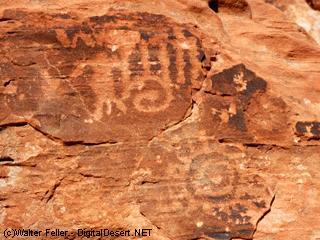 -
- 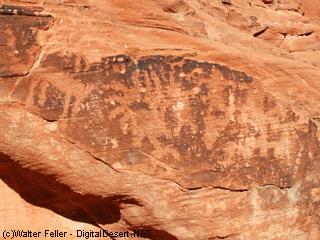
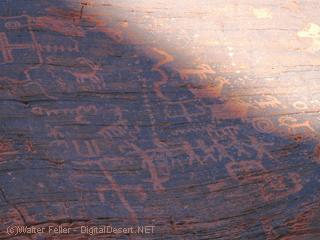 -
- 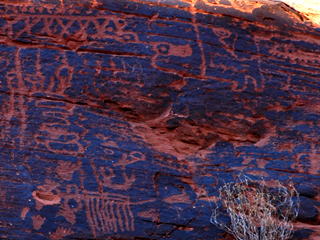
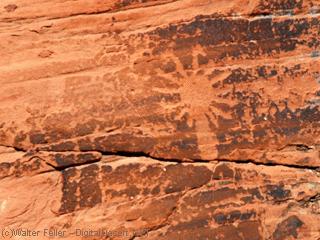 -
- 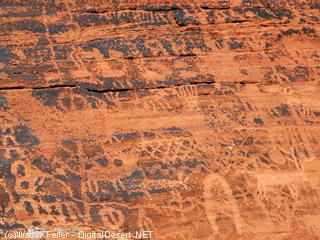
The petroglyphs are attributed primarily to the Basketmaker and Early Pueblo peoples, who occupied the region between roughly 500 B.C. and A.D. 1150. Their markings depict human figures, desert bighorn sheep, geometric forms, and symbols interpreted as hunting scenes or spiritual imagery. Some panels are positioned high on the canyon walls, suggesting ceremonial or restricted significance, while others lie closer to the ground, possibly tied to daily or seasonal activities.
Trail Description
The Mouse’s Tank or Petroglyph Canyon Trail is a short, easy walk of about 0.7 mile round trip with a modest 50-foot elevation gain. The path follows a sandy wash enclosed by cliffs coated in dark “desert varnish,” the preferred surface for carving. The petroglyphs begin appearing soon after the trailhead and continue along both sides of the canyon, with some of the most visible panels concentrated near the natural basin known as Mouse’s Tank—a sandstone depression that temporarily holds rainwater.
Significance
The canyon’s dense concentration of carvings provides rare insight into prehistoric desert life. Archaeologists view it as a ceremonial and communication site, recording migrations, hunting rites, or mythic stories. The petroglyphs also represent the earliest form of visual expression in the region, predating European settlement by millennia.
Conservation and Access
Visitors are urged not to touch the carvings; oils from skin hasten erosion. The best viewing light occurs in the morning or late afternoon when shadows reveal the etching depth. Temperatures can exceed 100 °F in summer, so cooler months are preferred. A paved parking area and interpretive signage mark the trailhead, and nearby Atlatl Rock offers additional panels accessible by stairway.
Summary
Petroglyph Canyon stands as a tangible link between the ancient inhabitants of the Mojave and the modern observer. Its preserved artistry in sandstone tells of endurance, adaptation, and belief amid one of the most arid landscapes in North America.